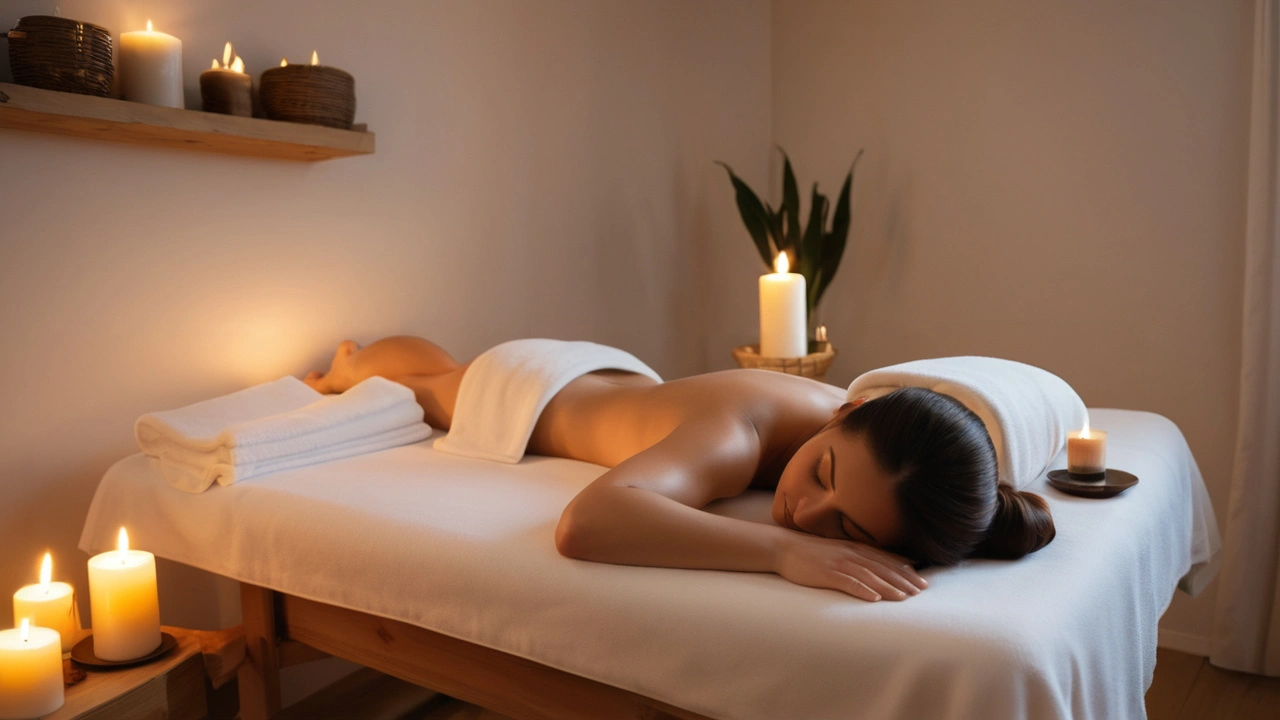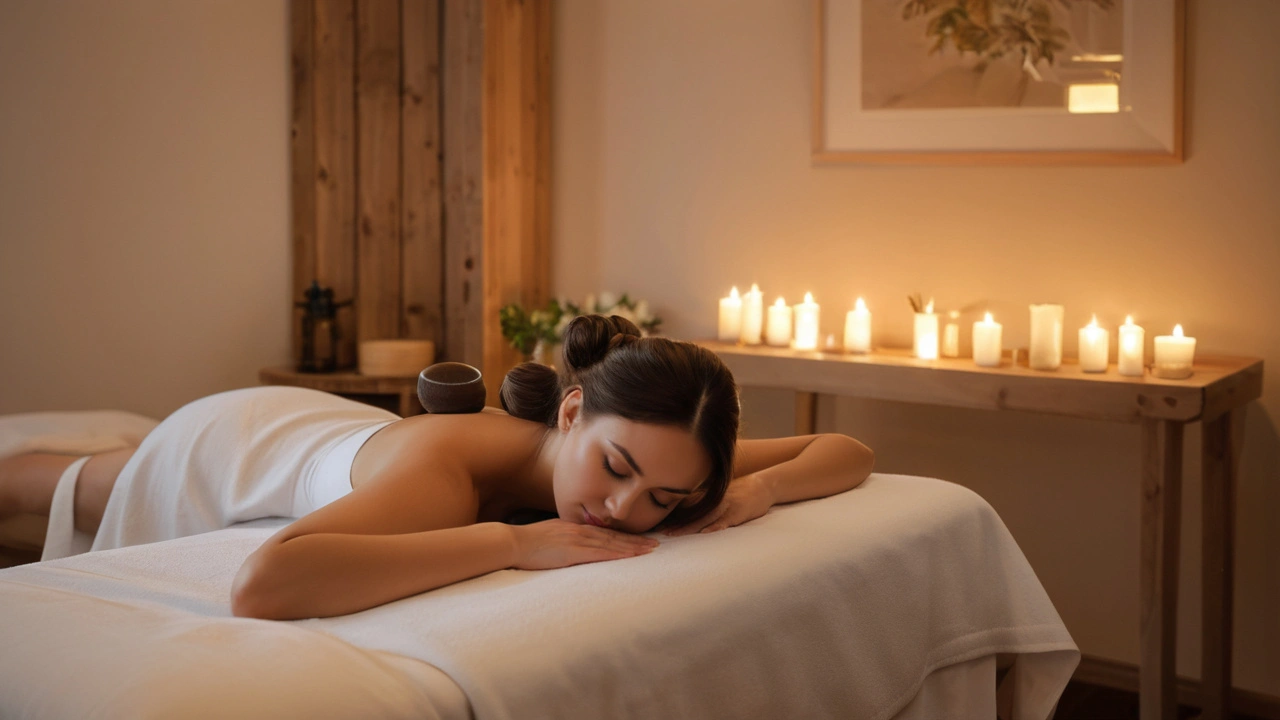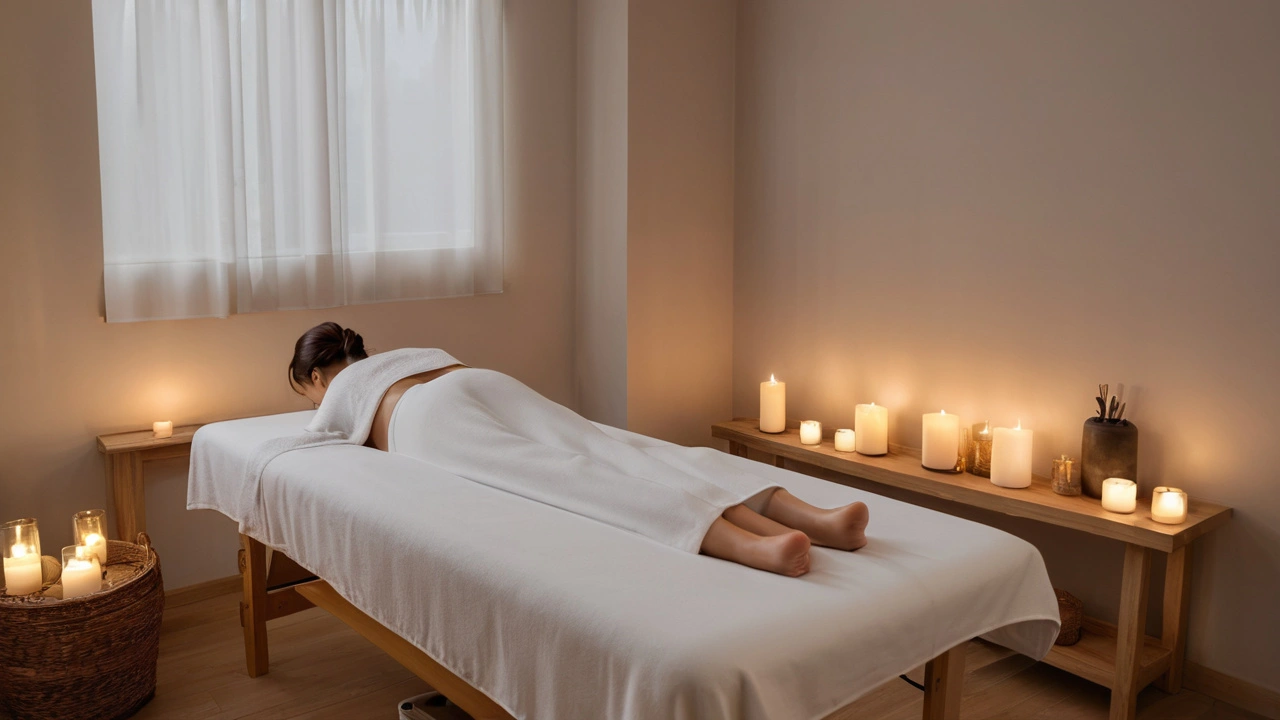Experience the Serenity: Swedish Massage for Relieving Modern-day Stress

Imagine stepping into a tranquil space, leaving behind the noise and chaos of everyday life. Your muscles feel tense, your mind crowded with thoughts. Then, a pair of skilled hands begins to work on your body, gently easing those knots and helping you breathe easier. Welcome to the world of Swedish massage.
This ancient practice has been around for centuries, rooted in the work of Pehr Henrik Ling in the early 19th century. Despite the march of time, one thing remains certain: the human need for touch and the tranquility it brings. Modern stress can wear us down, but Swedish massage offers a timeless solution.
In this article, you’ll learn about the history, techniques, and benefits of Swedish massage, alongside practical advice on finding the right therapist and making the most out of your sessions. Whether you’re new to massages or a seasoned spa-goer, there’s always something more to discover.
- The History of Swedish Massage
- Understanding the Techniques
- Benefits for Modern Stress
- Choosing the Right Therapist
- Maximizing Your Massage Experience
The History of Swedish Massage
Swedish massage, a technique that has wonderfully stood the test of time, finds its roots in the early works of Pehr Henrik Ling. Born in Sweden in the late 18th century, Ling was not a masseur by profession but a dedicated fencing master and gymnastics instructor. He aimed to create a system that could improve health and overall well-being through a structured approach. This led to the development of the Swedish massage which became a cornerstone of physical therapy and relaxation.
In the early 19th century, Ling established the Royal Central Institute of Gymnastics (RCIG) in Stockholm. Here, he trained students in his methods, which combined elements of both physical exercise and muscle manipulation. Ling's innovative techniques began gaining traction and eventually made their way beyond Sweden's borders. By the mid-19th century, they had a remarkable global influence.
Swedish massage is built on five primary movements: effleurage, petrissage, friction, tapotement, and vibration. Each technique serves a unique purpose, from promoting relaxation and aiding blood circulation to relieving tension in deep muscles. These methods are still used in modern-day sessions, reflecting their enduring value.
“Effleurage and petrissage are particularly beneficial for increasing blood flow and relieving muscular tension,” says Dr. Adam Perlman, an integrative health expert.
One interesting facet of Swedish massage history is its adaptation and evolution over time. As the technique made its way across Europe and eventually to North America, practitioners started incorporating their methods and cultural nuances into the practice. This led to a diversification in techniques and applications, making the Swedish massage a versatile and adaptable tool in stress relief and therapy.
By the 20th century, Swedish massage had become a standard offering in spas and therapy centers worldwide. Its techniques were integrated into other forms of massage and physical therapy, showcasing its flexibility and wide-reaching benefits. It's quite fascinating to see how a practice born out of a simple need for structured physical activity evolved into one of the most respected and well-known massage forms on the planet.
Today, Swedish massage is not just a luxury treatment but an essential part of holistic health and stress management. The core principles that Ling championed - promoting physical wellness through structured manipulation of the muscles - resonate even today. Whether you find yourself in a luxurious spa in New York or a quaint wellness center in Stockholm, the essence of Swedish massage remains a testament to its rich history and continued relevance.
Understanding the Techniques
Swedish massage is centered on five main techniques: effleurage, petrissage, tapotement, friction, and vibration. Each method serves a unique purpose and when combined, they can create a deeply relaxing and beneficial experience. Let’s delve deeper into what each of these techniques entails.
Effleurage is the foundation of Swedish massage. It involves long, gliding strokes done with the palm or fingertips. The purpose is to warm up the muscles, improve circulation, and prepare the body for deeper work. Effleurage helps to relax the body and mind, making it a perfect starting point for the massage.
Petrissage consists of kneading, rolling, and lifting the muscles. This technique increases the flow of blood and nutrients to the muscles, aiding in the removal of toxins. Petrissage can be particularly beneficial for people experiencing muscle tension. It works to break down knots and adhesions and to promote flexibility and relaxation.
Tapotement is a rhythmic technique involving rapid, percussive tapping or pounding motions. This method is often used toward the end of the massage to stimulate blood flow and invigorate the body. Tapotement can be quite energizing and is sometimes employed in sports massage to prepare muscles for activity.
Friction involves deeper, circular rubbing motions. This technique is used to penetrate deeper layers of muscle tissue, targeting areas of chronic tension and pain. Friction can be intense, but it is highly effective in releasing stubborn knots and improving mobility. Consistent friction work can lead to significant long-term benefits.
Vibration involves oscillating movements done with the flat of the hand or fingertips. It helps to relax and loosen muscles, promoting circulation and reducing muscle strain. Vibration can be soothing and is often used at the end of the massage to calm the body and mind.
According to a study published in the Journal of Alternative and Complementary Medicine, “Swedish massage has been shown to reduce cortisol levels and increase serotonin levels, contributing to an overall sense of well-being.”
Understanding these techniques is crucial for both massage therapists and receivers. Awareness of what each method achieves can enhance the experience and ensure optimal results. By communicating any specific needs or trouble areas to your therapist, you can tailor a Swedish massage session to address particular concerns, leading to a more effective treatment.
Some therapists may also integrate other modalities into the session, such as hot stone therapy or aromatherapy, to amplify the benefits. It's always a good idea to discuss any additional treatments before starting. By doing so, you can create a holistic approach to alleviate the burden of modern stress through the timeless practice of Swedish massage.

Benefits for Modern Stress
In a world that never slows down, finding time to relax can feel impossible. Yet, stress relief is essential for maintaining both physical and mental health. Swedish massage, with its gentle and rhythmic strokes, offers a sanctuary from the relentless pace of life. One of the primary benefits of Swedish massage is the significant reduction of stress hormones. According to studies, regular massages can lower cortisol levels by up to 30%. Lower cortisol levels mean a decrease in anxiety, better sleep, and an overall improved mood.
Another remarkable benefit is muscle relaxation. Our bodies unconsciously store stress in muscles, leading to chronic pain and tension. Swedish massage targets these trouble spots, using techniques that promote blood flow and alleviate tightness. The result is not just temporary relaxation but lasting relief from muscle pain. This is particularly beneficial for people who suffer from conditions like fibromyalgia or chronic back pain.
Increased blood circulation is another perk of Swedish massage. The gentle kneading and firm strokes help enhance the flow of oxygen and nutrients throughout the body. Improved circulation contributes to muscle recovery and reduces feelings of fatigue. Moreover, better circulation supports the immune system, helping the body fight off illnesses more effectively.
Mental health also receives a significant boost. The calming environment and therapeutic touch can help reduce symptoms of depression and anxiety. The mind-body connection is palpable during a Swedish massage session, and many people report feeling a renewed sense of clarity and emotional balance. This is not just anecdotal; research supports that massage therapy can increase serotonin and dopamine levels, hormones crucial for happiness and well-being.
Interestingly, Swedish massage can also improve flexibility. Regular sessions help lengthen muscles, making joints more limber and movements easier. This can be incredibly beneficial for those who spend long hours at a desk or those who are active in physical sports. Increased flexibility reduces the risk of injuries and enhances overall performance.
"The soothing touch of a massage is not just a luxury but a potential pathway to long-term health," says Dr. Tiffany Field, director of the Touch Research Institute at the University of Miami School of Medicine.
Finally, Swedish massage promotes better sleep. By easing tension and enhancing relaxation, it prepares the body and mind for a restful night. Poor sleep is a common consequence of modern stress, and improving sleep quality can have wide-ranging benefits, from better concentration and productivity to a balanced mood.
| Benefit | Impact |
|---|---|
| Reduced Cortisol Levels | Decreases anxiety, improves mood |
| Muscle Relaxation | Relieves chronic pain |
| Increased Circulation | Boosts immunity, reduces fatigue |
| Mental Health | Balances mood, reduces depression |
| Improved Flexibility | Prevents injuries |
| Better Sleep | Enhances overall well-being |
Choosing the Right Therapist
Opting for a Swedish massage can be a fantastic step towards reducing stress, but finding the right therapist is just as important to ensure a fulfilling experience. So, how do you find the best for your needs? Start by researching locally. Look at online reviews and ask for recommendations from friends or family members. It’s essential to choose someone with a certification in Swedish massage and preferably, a good amount of experience in the field.
Credentials matter a lot in this field. Make sure your therapist is certified by a reputable organization such as the American Massage Therapy Association. Certification ensures that the therapist has met specific standards of education and ethics, giving you peace of mind. Next, consider their specialization. While Swedish massage is a general technique, some therapists specialize in addressing particular issues like chronic pain or athletic muscle tension.
It's equally important to have a personal connection with your therapist. Communication between you and your therapist is key, and you'll want someone who listens to your concerns and understands your specific needs. Don’t hesitate to ask them about their approach during an initial consultation. A professional therapist should be open to discussing how they can cater to your individual preferences and stress points.
Price is another factor but it shouldn’t be the sole deciding one. Quality often comes at a slightly higher cost, but the benefits can far outweigh the price. Look for packages or monthly plans that can make regular sessions more affordable. Sometimes, a higher price can also cover additional amenities that enhance the overall experience, like aromatherapy or a personalized stretching plan.
Your comfort during a session is paramount. Make sure the environment is clean, calm, and conducive to relaxation. You can often get a good sense of this from online galleries or during an initial visit. Pay attention to factors like lighting, music, and even the kind of massage oil used, as these small details significantly affect your experience.
“Finding the right therapist is an integral part of the massage experience. A good therapist can not only relieve physical tension but also provide a nurturing and calming space,” says Linda Harris, a certified massage therapist with over 20 years of experience.
Finally, trust your instincts. If you feel comfortable and at ease during your consultation, you're likely on the right path. The goal is to find someone who can not only execute the techniques correctly but also make you feel valued and understood. Your stress relief journey is personal, and the right therapist will be a valuable partner in that quest.

Maximizing Your Massage Experience
So, you’ve decided to invest in a Swedish massage to alleviate some of the stress that has been building up. But how do you make sure you’re getting the most out of each session? There are several key steps to ensure you walk away not just relaxed, but rejuvenated and ready to tackle life with renewed energy.
First, it’s important to communicate with your therapist. Before the session starts, take a few moments to discuss what you’re hoping to achieve—whether it’s relaxation, relief from muscle tension, or a specific focus area like your back or shoulders. Ask about the pressure level and be honest if it's too light or too intense. A good therapist will appreciate your feedback and adjust accordingly.
Next, arrive early to your appointment. Rushing in last minute only adds to your stress. By arriving 15 minutes early, you give yourself time to unwind, fill out any necessary paperwork, and settle in. Take those few extra minutes to relax in the waiting area, drink some water, and start calming your mind.
Avoid heavy meals at least a couple of hours before your massage. Digesting food requires energy and can make you feel lethargic. Instead, opt for a light snack if you’re feeling hungry. Staying hydrated with water is crucial, both before and after the session, to help flush out any toxins released during the massage.
During the massage, focus on your breathing. Deep, slow breaths can enhance relaxation and help clear your mind. If you find your thoughts drifting to stressful topics, gently steer them back to the present moment, focusing on the sensations of the massage. This mindful approach can make the experience more immersive and effective.
Post-massage care is just as important. After your session, take time to rest and hydrate. Listen to your body and avoid strenuous activities for the next 24 hours to allow your muscles to fully benefit from the treatment. Some light stretching can help maintain the flexibility and relief you’ve achieved.
Consider scheduling regular appointments to maintain the benefits of Swedish massage. Whether it’s once a month or more frequently, a consistent routine can help keep stress levels manageable. Think of it as a proactive approach to mental and physical health, rather than just a one-time fix.
According to the American Massage Therapy Association, “Regular massage therapy programs can help improve overall health and wellness by decreasing stress levels and promoting relaxation.”
Creating an at-home routine can also extend the benefits. Simple practices like warm baths, self-massage with essential oils, or using a foam roller can help keep tension at bay between professional sessions. Incorporating these small habits into your daily life can make a significant impact on your overall well-being.
By following these steps, you’re setting yourself up for a more effective and enjoyable Swedish massage experience. Remember, the ultimate goal is to take care of your body and mind, reducing stress and enhancing your quality of life.





